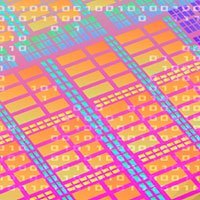Text Mining and Natural Language Processing (NLP) Scientific Interest Group
With the increasing availability of text information related to diverse research fields across the NIH Intramural Research Program, the domain of biomedical text mining and Natural Language Processing (NLP) has seen a tremendous growth. Some examples of how researchers across campus utilize NLP are improving literature search in PubMed, automatic entity extraction from scientific articles for scaling up manual curation, etc. Researchers are building knowledge discovery resources for improved literature search and network analysis of scientific literature. Furthermore, text mining techniques are core to computational biology including genomics and other “-omics” analysis.
In addition to literature mining, there are many emerging clinical applications of text mining. Electronic health records (EHRs) and parsing of EHR data have captured much attention among clinical professionals. Other areas of clinical relevance that can greatly benefit from NLP techniques include patient cohort identification, clinical question answering, health care quality research, precision medicine, bio surveillance, drug development, text analysis. The text mining and NLP SIG provides clinicians on campus more opportunities to learn and network with text mining researchers.
Several institutes on campus are doing text mining, but these groups can benefit from the opportunities to collaborate and learn from each other’s work via the NIH Text Mining and Natural Language Processing (NLP) Scientific Interest Group.
Organizing Committee
Lana Yeganova, Ph.D., NLM
Qingyu Chen, Ph.D., NLM
Ayah Zirikly, Ph.D., Clinical Center
Mailing List
To join the Text Mining and Natural Language Processing (NLP) Scientific Interest Group mailing list, please visit the Text Mining and Natural Language Processing (NLP) Scientific Interest Group Listserv home page, then click the “Subscribe or Unsubscribe” link in the right sidebar.
Chair
- Lana Yeganova, Ph.D., NLM
Advisors
Scientific Focus Areas


Computational Biology
This page was last updated on Thursday, August 12, 2021